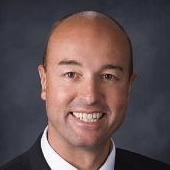It took 88 legislative days — a few more days than many lawmakers and pundits expected — but the 2013 Legislature shut down for the year Thursday.
And even if it was a transitional session on education, in the aftermath of Propositions 1, 2 and 3, it was nonetheless a productive session.
Here’s a recap and review:

The 2013-14 budget
The Legislature had a bit of a dustup over the K-12 budget. The Senate voted down one budget proposal — something that hadn’t happened in the Statehouse since 1992. The groups went back to the bargaining table, and came up with a budget that was, well, virtually identical.
Schools will receive a $1.308 billion budget, a 2.2 percent increase. Among the key line items:
- Pay for performance/professional development. Districts can share $21 million for locally crafted merit pay plans and professional development. This had been a sticking point. Critics wanted tighter restrictions on how the money can be spent, and the Legislature passed a last-minute compromise designed to ease their concerns.
- Technology pilot programs. Another contentious piece of the budget puzzle, and it survived intact. Districts can compete for $3 million in grants.
- Common Core. Another professional development line item, totaling $3.75 million.
- Discretionary money. Districts will get another $4.25 million in discretionary money, a 1.5 percent increase. Critics wanted more.
- Teacher pay. If you’re a teacher at the low end of the salary scale, you’re in line for a raise. The 2013-14 schools budget raises the minimum salary from $30,500 to $31,000. Other teachers could get pay raises too, since the budget puts $11.3 million into “unfreezing” two years on the teacher salary schedule. Salaries are set at the local level, though, so results will vary from district to district.
- Math and science teachers. If you’re a math or science teacher, the state is in hiring mode. The Legislature has set aside $4.85 million to beef up math and science faculty statewide.

Fixing the 2012-13 budget
First things first. The Legislature also had to figure out what to do with the $30.6 million in the K-12 budget — money that had been earmarked for Students Come First programs. The money was folded back into K-12, and districts should see the money in May.
Personal property taxes
Education groups got their way on the most heavily lobbied tax issue of the 2013 session. Lawmakers approved a plan to partially repeal the tax on business equipment and supplies — a $20 million tax cut that eliminates the tax for 90 percent of businesses. Education groups feared that a full repeal, carrying a $120 million price tag, would erode the property tax base, jeopardizing future school bond issues and supplemental levies.
Collective bargaining
After Gov. Butch Otter’s education task force said it would not look at labor issues, the Legislature wound up spending much of the session sifting through bills that echoed elements of the failed Proposition 1.
Among the key bills:
- A bill allowing school districts to cut teacher pay and reduce contract days.
- A bill eliminating ongoing, or “evergreen” contract clauses.
- A bill that could require local teachers’ unions to certify that they represent at least 50 percent of a district’s staff.
- A bill that once again eliminates a teacher early retirement program.

Until the school budget issue exploded in the session’s final days, collective bargaining was the most contentious education issue of the 2013 session. Most bills pit two lobbying groups against each other: the Idaho School Boards Association and the Idaho Education Association.
The final outcome was mixed. One controversial measure — requiring school boards to impose their last best contract offer in the event of an impasse in negotiations — was scuttled in the session’s waning days. A few bills enjoyed across-the-board support: including a bill to return contract negotiations to open session, a bill that says districts can consider factors other than seniority when reducing staff and a bill to encourage the e-delivery of contract offers.
Expect more discussion of labor issues in the months leading up to the 2014 session.
A summer assignment
A legislative “interim committee” will spend the summer tackling a broad assignment: “to undertake and complete a study of how to improve and strengthen Idaho’s K-12 educational system and all matters relating thereto.” Unlike Otter’s education task force, this interim committee is expected to look at collective bargaining issues.
Charter facilities
If you operate a charter school, you will likely wind up with about $34,000 to put toward facility costs. A bill earmarking $1.4 million in stipends for charter facilities has passed both houses and is headed to the governor’s desk.
Charter governance
If you want to operate a charter school, you might be able to get help from a university. A charter school governance bill, also on its way to Otter, would allow public universities to authorize a charter school.

Public lands
Here’s another legislative interim committee with a tie to education: a panel that will spend the off-season studying the transfer of federal lands to state ownership. The Legislature also went on record demanding the transfer of some 16 million acres of federal lands — and saying 5 percent of the proceeds from federal lands sales should go into the public school endowment.
Voter measures
Supporters said the bill had nothing to do with Propositions 1, 2, and 3 — but legislators approved a bill tightening the rules to get initiatives and referendums on the ballot. Otter signed the bill Monday.
Scholarships
At the State Board of Education’s urging, the Legislature shifted $5.9 million into an expanded Opportunity Scholarship program. The goal is to give more robust scholarships to high school graduates, in hopes of encouraging them to stay in school.

Cursive handwriting
Handwriting-challenged grade schoolers might wind up getting an education in cursive. The State Board of Education has been asked to write rules on teaching cursive in elementary schools; Rep. Linden Bateman carried the measure.
